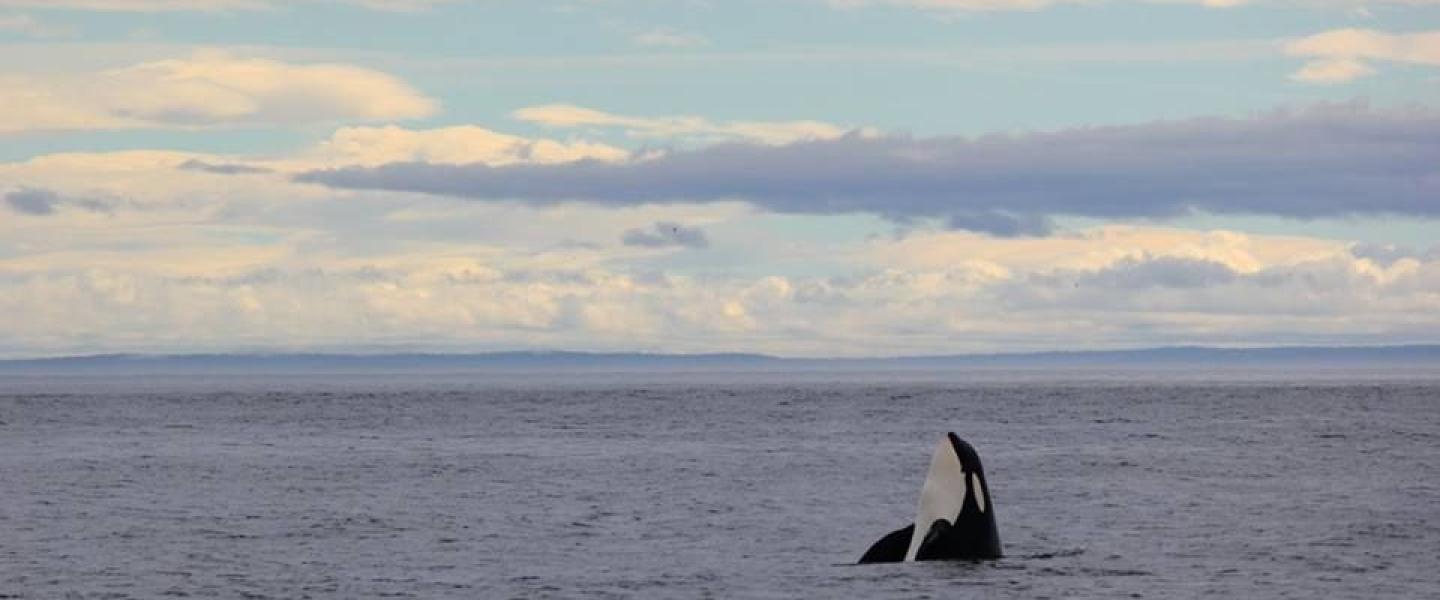
Haleigh | M/V Osprey | 06/04/2021 | 5:30 pm
Our Friday evening sunset tour began as we traveled north up San Juan Channel hoping to find Bigg’s killer whales. Earlier reports showed this pod traveling south through the Strait of Georgia, allowing us to time our arrival with them right around Matia Island. Sure enough we spotted them as we traveled through President's channel and into Haro Strait. We recognized them as Bigg’s Killer whales, including Mother T46B (Female, 1988) and her calves T46B2 (Female, 2008), T46B3 (Female, 2011), T46B4 (Female, 2013) and T46B6 (Unknown, 2019). The orcas were looping in a circular motion seemingly preoccupied with something under the water as we slowly drifted into the scene. From the wheelhouse, our captain spotted an individual with a seal lifelessly drooped out of its mouth… they were feeding! As they finished their dinner, the curious young calves began to spy hop, realizing the surrounding admirers. Their playful behavior turned into a performance of cartwheels, tail flips, and in-unison rolling around as they made their way towards a nearby vessel! Having a close-up audience only made them more playful, attempting to splash around using their back tail. We observed from afar in awe of this remarkable and rare sighting while slightly jealous we weren’t picked. A few minutes passed before they reformed their pod and were on their way heading west down Haro Strait. As we made our trek back to the harbor, guests shared photos and remarked on the incredible experience we had all encountered.
The Biggs Killer Whales are a transient group that predominantly feed on marine mammals like harbor seals, harbor porpoises, and Steller sea lions. Despite the pollution from toxic chemicals and organic pollutants that make their way down rivers and into the Salish Sea, the Bigg’s Killer Whale species currently have a stable population status because of the abundance of marine mammals. Unfortunately, the same cannot be said about our Southern Resident Killer Whales (SRKW). This distinct species depends on Chinook salmon for 80% of their diet. The decline of Chinook salmon due to commercial overfishing, damming of rivers, and persistent pollutants has had major negative effects on the SRKW. Beyond malnutrition, the SRKW will consequently break down the blubber that has stored decades of fat-loving toxic pollutants that are causing problems from the inside out.
Having a reliable food source is the greatest indicator for the success of our orcas. In spite of all of these problems, the best thing we can do to help our SRKW is to promote better fishing practices and the use of organic, non-toxic chemicals. We’re hopeful we can make these changes and see a rebound in the SRKW population that mirrors that of the Bigg’s Killer whales!